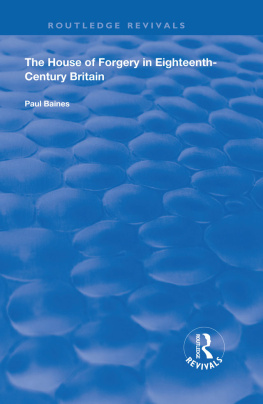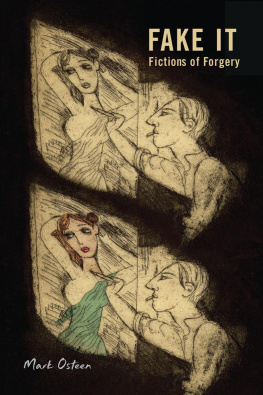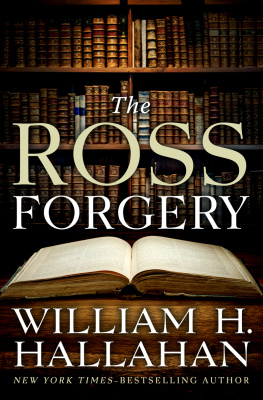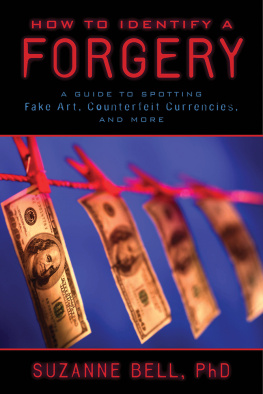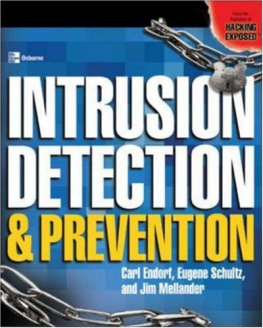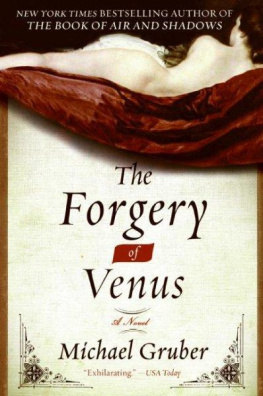THE
Detection of Forgery .
A PRACTICAL HANDBOOK
FOR THE USE OF
BANKERS, SOLICITORS, MAGISTRATES' CLERKS,
AND ALL HANDLING SUSPECTED DOCUMENTS.
BY
DOUGLAS BLACKBURN
(Late Expert to the Natal Criminal Investigation Department, and the Transvaal Republic)
AND
Captain WAITHMAN CADDELL.
LONDON:
CHARLES & EDWIN LAYTON,
FARRINGDON STREET, E.C.
1909.
ERRATUM. (Page .)
Owing to the averages given in the table on page 15 being printed from some incomplete manuscript they are incorrect. It is obvious that the proper averages are
Transcriber's Note: The corrections in the above erratum have been applied. The handwritten pages entitled '' have been moved to the beginning of their relevant chapters. Hyphenation and punctuation have been standardised.
CONTENTS.
| CHAPTER | Page |
| Introduction |
| I. | The Principles of Handwriting Analysis |
| II. | Measurement and its Appliances |
| III. | Terminology |
| IV. | Classes of Handwriting |
| V. | How to Examine a Writing |
| VI. | The Alphabet in Detail |
| VII. | The Capitals |
| VIII. | Punctuation |
| IX. | Paper and Watermarks |
| X. | Inks |
| XI. | Erasures |
| XII. | Pencils and Stylographs |
| XIII. | Anonymous Letters and Disguised Hands |
| XIV. | Forged Literary Autographs |
| XV. | Forged Signatures |
| XVI. | The Expert in the Witness-box |
| XVII. | Handwriting and Expression |
| XVIII. | Bibliography of Handwriting |
INTRODUCTION.
The object of this little work is to assist those who may occasionally be called upon to form an opinion as to the genuineness of signatures, alterations in cheques, and the varied doubtful documents that demand the serious consideration of business men by way of a preliminary to "taking further steps."
It is the first attempt published in England to explain the principles upon which the comparison and examination of handwriting are conducted by experts. It is, and can only be, an outline of suggestions how to begin, for no two experts follow precisely the same methods, any more than two painters work on the same lines. Both agree in recognising certain rules and general principles, but each strives for his objective point by the employment of those means which experience, temperament, taste and opportunity suggest. The study of the elementary rules of their art puts them upon the road for perfecting it, after which success can only be attained by rightly reading the signs that lead to the ultimate goal.
In reading these chapters the student should begin by practising that self-help which is essential to success. He must read with pen and notebook. It is with the object of compelling this valuable habit that no illustrative examples are given in the text. It would have been easy to fill many pages with script illustrations, but experience shows that a much greater impression is made upon the memory by the hand forming the outlines described than if they were provided in pictorial form. In other words, the student should supply this purposeful omission by himself constructing the illustrations from the description. The trifling extra time and trouble thus demanded will be amply repaid by the ease and rapidity with which the various points will be fixed in the memory. Nor is this the only advantage to be gained. The act of reproducing the illustration cited will emphasise and render clear technical and mechanical features that would require many words to explain, with the attendant risk of confusing the mind by mere verbiage.
The material and opportunity for practising and studying the comparison of handwritings are abundant. Every letter written or read affords a subject, and in a surprisingly short space of time the student will find himself instinctively noting and analysing peculiarities in handwriting that probably never arrested his attention before. The principles of the art are exceedingly simple and free from complexity, and many a person who takes up the study will find that he possesses powers of analysis and observation unguessed before. The most successful expert is he who observes most closely and accurately, and the faculty needs only the spur of an objective point for it to be developed.
After a little practice, experience will suggest many methods of examination and test not dealt with here. For example, photographic enlargements can be and are utilised with great advantage by bringing out minute details, especially in signatures, erasures and alterations. Interesting experiments can be made with a view to discovering the effect of different kinds of inkimportant in settling the question whether the whole of a particular writing was done with one fluid, and at the same time, or at intervals.
The study of erasures and alterations of figures or characters also comes within the scope of developments of the art which it is not deemed necessary to deal with at length in these pages, for after experience will suggest their use and the best methods of procedure. For the beginner the instructions given in the chapters that follow will be found amply sufficient to direct him how to take up a fascinating and practical accomplishment, and this, with no further aid than his own judgment, perseverance and powers of observation and deduction.
CHAPTER I.
The Principles of Handwriting Analysis.
The principle on which experts claim to be able to detect variations and to differentiate between handwritings is based on the well-established axiom that there is no such thing as a perfect pair in nature; that, however close the apparent similarity between two things, a careful examination and comparison will reveal marked differences to those trained to detect them.
This is especially true of everything that is produced by human agency. Everyone knows how difficult it is to keep check upon and eradicate certain physical habits, such as gestures, style of walking, moving the hands, arms, &c., tricks of speech, or tone of voice. These mannerisms, being mechanical and automatic, or the result of long habit, are performed unconsciously, and there is probably no person who is entirely free from some marked peculiarity of manner, which he is ignorant of possessing. It is a well-known fact that the subject of caricature or mimicry rarely admits the accuracy or justness of the imitation, although the peculiarities so emphasised are plainly apparent to others. Even actors, who are supposed to make a careful study of their every tone and gesture, are constantly criticised for faults or mannerisms plain to the observer, but undetected by themselves.
It is easy, therefore, to understand how a trick or a gesture may become a fixed and unconscious habit through long custom, especially when, as in the case of a peculiarity of style in handwriting, there has been neither criticism on it, nor special reason for abandoning it.
Every person whose handwriting is developed and permanently formed has adopted certain more or less distinctive peculiarities in the formation of letters of which he is generally unaware.




